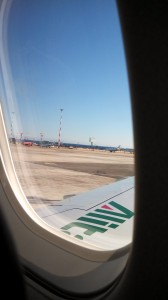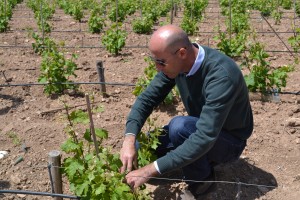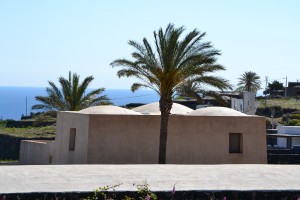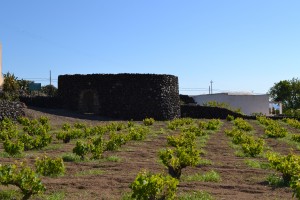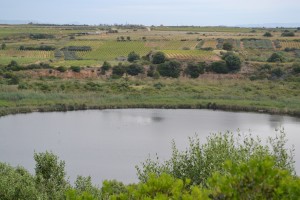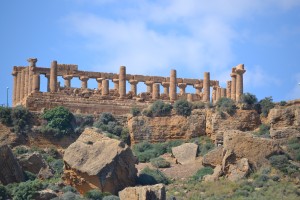World winemakers unite! Admittedly I have Communism and Leon Trotsky on the brain thanks to having just finished Barbara Kingsolver’s novel, The Lacuna. However, the notion that winemakers are globally uniting to produce rosé wines is not that far-fetched, at least not in terms of the depth and breadth of these wines now being produced.
While drinking pink wine (at least publically) was previously relegated to newbies quaffing White Zinfandel and other sweet blush wines, today’s rosés run the gamut in hue and are primarily dry in style. With a decade of growth in the U.S. market, rosé continues to be one of the U.S.’s fastest growing wine categories in retail sales; the message is clear: Rosé is here to stay. Tweet that!
A recent “Pink Party” hosted by Winebow showcased the importer’s vast portfolio of rosés, which not only ranged in style (from still to sparkling and pale salmons to deep pinks), but also in origin of production.
As the number one producer of rosé worldwide, it is not surprising that the line-up was heavy in French samples, with appellations that specialize in the pink stuff such as Provence and Tavel well represented. Italian specimens were similarly prevalent, most of which hailed from the southern portion of the boot: Sicily, Sardinia, Campania and Calabria.
But, Winebow’s rosé collection is much more widespread than the wine world’s two top producers. In addition to a reasonable showing of wines from the U.S.’ east and west coasts, more unique appearances came from Croatia, Greece, Lebanon and the Republic of Macedonia.
Adding to the diversity, the sparklers were not only comprised of the usual suspects such as Rosé Champagne and a beautiful rose Cava, but also on hand were lovely bubbles from Austria and Tasmania.
And, vying for most unusual wine of the day was a “100% pure rosé sake” produced from heirloom purple rice.
With such a plethora of rosé wines in the market, it can be quite confusing to the consumer to make sense of it all. But, the easiest way to understand rosé is to think about something with which most people are familiar – tie-dyeing. Tweet this!
Such childhood arts-and-crafts projects provide a simple, but effective tool, for learning about rosé production. Armed with white t-shirts, rubber bands and RIT dye, we saw that leaving the t-shirt in the dye bath for just a few minutes resulted in a pale hue, while soaking it for the full hour delivered the deepest color. Moreover, the instructions advised that higher temperatures and agitation further added to the color saturation.
Apply these same principles to winemaking, substituting grape skins for RIT dye and grape juice/must for t-shirts (no rubber bands required) and, by George, you’ve got it. Now you are ready to join the revolution!
Looking for some rosés to sip this summer (yes, I promise it will be summer one of these days)? Here are some of my favorites from the Pink Party tasting:
SPARKLING WINES
Jansz Sparkling Rose NV, Tasmania, Australia
A blend of Pinot Noir, Chardonnay and Pinot Meunier with just a hint of color. Citrus, mineral and peach notes.
Juvé y Camps Rosé Brut Pinot Noir NV, Cava, Spain
100% Pinot Noir and medium-deep pink in color. Floral and fruit on the nose with red fruit and herbs on the palate.
Lanson Brut Rosé Champagne NV, Champagne, France
A blend of Pinot Noir, Chardonnay and Pinot Meunier. Rich and intense with typical yeasty character along with citrus and a hint of red fruit.
STILL WINES
Adelsheim Rosé 2013, Willamette Valley (OR), USA, $25.00
100% Pinot Noir. Herbs with some depth and slight grip on the palate. Fresh strawberries and melon.
Chateau Mercouri Lampadias Rosé 2013, Ilia, Greece
A 50-50 blend of Avgoustiatis and Agiorgitiko. Simply lovely with good fruit and acidity.
Les Vignobles Gueissard Côtes de Provence Rosé “Les Papilles” 2013, Provence, France
Mourvèdre, Syrah, Cinsault, Grenache, Cabernet Sauvignon and Rolle. Berries and cherries with body and good length.
Zenato Bardolino Chiaretto 2013, Veneto, Italy
Corvina, Rondinella and Merlot. Very fruity with strawberry, raspberry and dried herb aromas and flavors.



